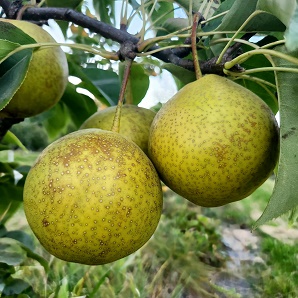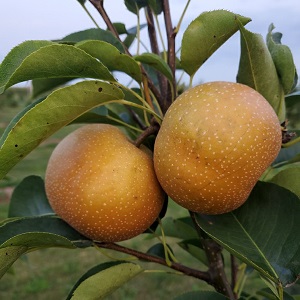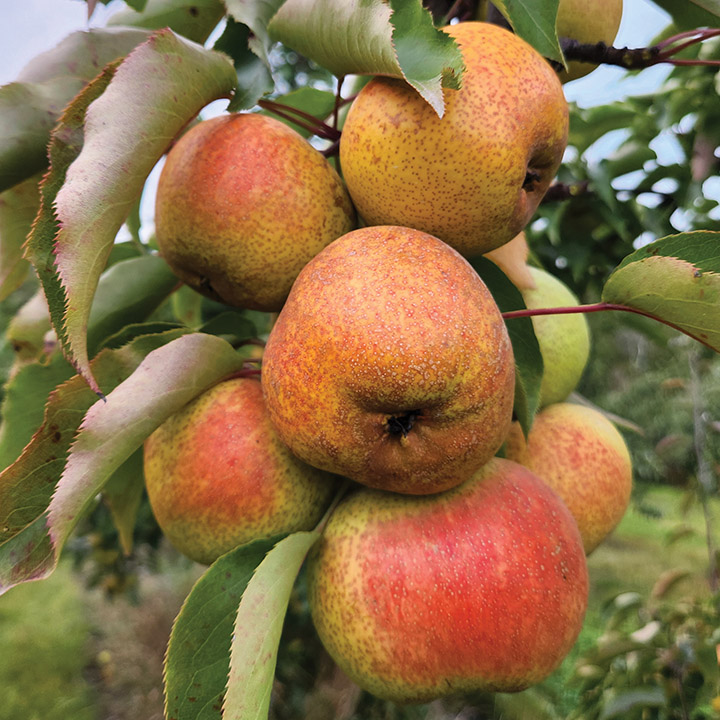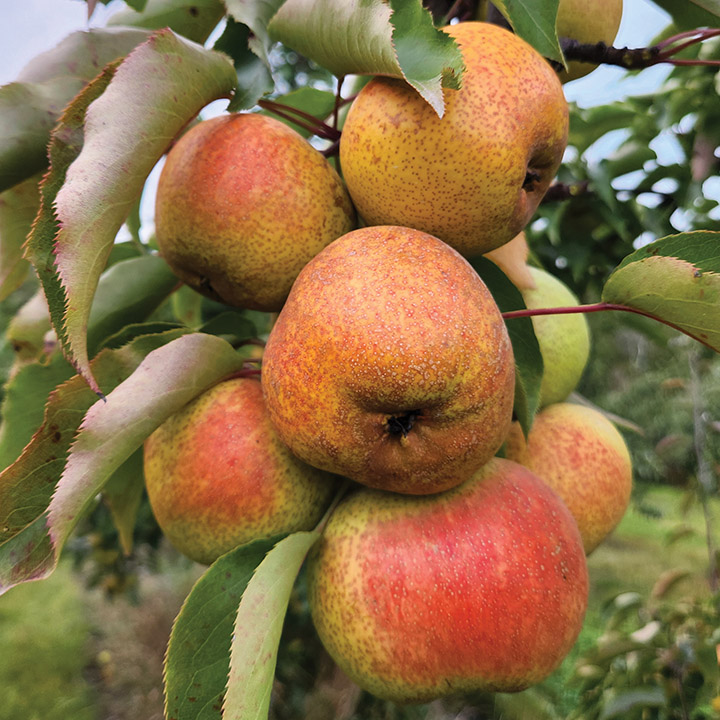Asian Pear : DRIPPIN HONEY Semi-Dwarf (OHxF97) (Orchard Grade)
$37.95
An 'orchard grade' is a tree that may be somewhat shorter, slightly crooked, or a bit scratched, or for some other reason is not a perfect front lawn specimen. These trees will work just as well in an orchard as a first or number one would, since they still produce the very same fruit.
It’s hard to imagine a more catchy, evocative name for an Asian pear, but in all fairness, it fits surprisingly well. So is this a totally new pear, or did someone rebrand an existing variety? We have not been able to figure out, but in the meantime, we’re growing it and enjoying the fruit. Although very similar to Michirasu in taste and texture, it differs in appearance. Nijiseiki looks almost identical, but Drippin’ Honey™ seems somewhat sweeter. However, none of this speculation should keep you from planting your own tree!
NEEDS A POLLENIZER | ZONE 4/5 | HARVEST: EARLY OCT
Only logged in customers who have purchased this product may leave a review.
Growing Tips
Asian Pears are very precocious which means they tend to produce quite heavily when only a few years old. This can result in a weakened tree as all its energy is going into producing fruit instead of forming a sturdy tree. For this reason we recommend removing most of the fruit for the first several years.
All European (regular) and Asian pears will pollinate each other providing their bloom times overlap. Generally you can go by the expected harvest time, meaning only the very early and the very late might not be compatible with each other. However, since Asian pears, on average, bloom earlier than Europeans, you might pair an early European with a mid or late Asian.




Reviews
There are no reviews yet.